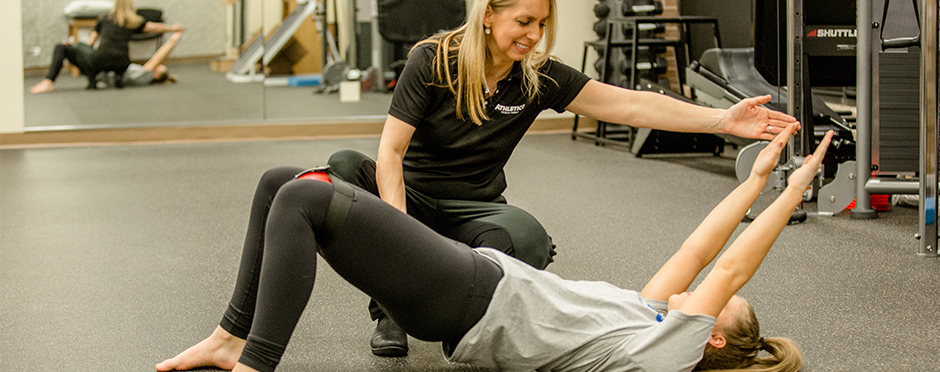
Struggling With Incontinence? Here Are 3 Exercises You Should Try, According To A Pelvic Health PT
Leave a CommentIncontinence, or the lack of voluntary control over urination and defecation, can be life-altering. It can come in six types: insensible, stress, urgency, mixed, nocturnal enuresis, and overflow. Depending on the type of incontinence, your therapy will be specific to you. However, below, you will find the most common pelvic floor retraining exercises to help get you started. For more personalized care, please reach out to a physical therapist (PT) near you.
“Freeze, Breathe, Squeeze Sequence”
Once you detect the urge to urinate, remain still for about a minute before changing positions or walking to the bathroom. Next, take deep, slow breaths to decrease the urges. Lastly, squeeze the pelvic floor 1-5 times to prevent leakage and reduce bladder activation. Once this series is completed, you can establish if this is a true urge and if the timing is appropriate. You can also establish the safest and most effective route to the bathroom, thus avoiding slips, trips, and falls. Also, with a bladder diary and the help of a physical therapist, you can retrain your body and bladder to establish a more stable urinary schedule.
Quick Flicks of the Pelvic Floor
The pelvic floor also needs to be trained to address high-stress moments. These events can include coughing, sneezing, laughing, jumping, slipping, and falling. In order to be prepared for these events, it is important to practice quickly and effectively contracting your pelvic floor maximally up and in; then allowing it to relax completely. This can be performed while you are sitting at your desk, waiting in line at the grocery store or when you are resting comfortably in bed. Focusing on an isolated contraction can help build strength and prevent leakage during “unplanned” events such as sneezes. These exercises are most commonly referred to as “Kegels”; they are not the answer to everything, but are a good place to start!
Long Holds
The pelvic floor is primarily made of endurance fibers that help stabilize your pelvis and support your internal organs. To train these muscles, practice contracting and holding your pelvic floor muscles up and in for 5 seconds, 10 seconds, and steadily build up your endurance to 45+ seconds. At first, practice this at rest and in a comfortable position, then progress to multi-tasking, such as walking, climbing stairs, or even squatting. This will help build your pelvic floor strength and give you the mental and physical peace of mind that comes with knowing your body is strong and healthy.
Come See Us To Strengthen Your Pelvic Floor
This last and most important tidbit of information about pelvic health is that this process takes time. It is common for pelvic floor strengthening and retraining to take up to 6-8 weeks until you see significant results. If you are still feeling a bit overwhelmed and defeated regarding your condition, reach out to your local Athletico and find the pelvic health specialists near you. Leaking is never normal, and it doesn’t need to be if you can find the right physical therapist.
Find a Pelvic Health Therapist
The Athletico blog is an educational resource written by Athletico employees. Athletico bloggers are licensed professionals who abide by the code of ethics outlined by their respective professional associations. The content published in blog posts represents the opinion of the individual author based on their expertise and experience. The content provided in this blog is for informational purposes only, does not constitute medical advice and should not be relied on for making personal health decisions.
